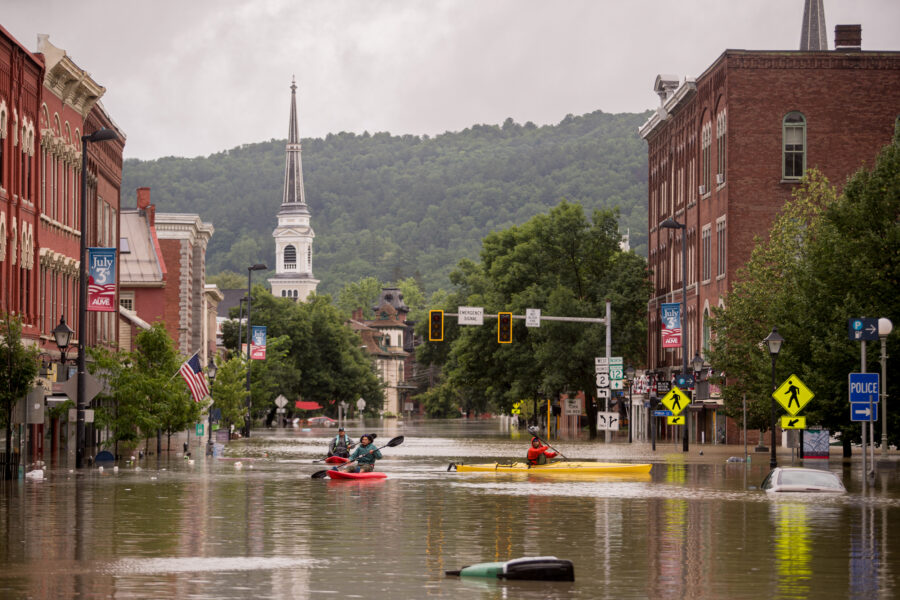A decade into America’s oil and gas boom, and scientists still know very little about how hydraulic fracturing (fracking) and shale development affect wildlife, according to a recent scientific study.
The knowledge gap is particularly glaring when it comes to the ecosystem impacts of fracking fluid and wastewater spills.
Scientists cannot yet begin to draw simple conclusions about drilling’s effects on animals, plants and habitats because “basic data is missing” on issues such as fracking fluid chemistry, and because of limited access to well sites, said Sara Souther, the study’s lead author.
“We’re creating this ecological experiment from shale development—but we’re not taking the data.”
Souther was a post-doctoral fellow in the University of Wisconsin-Madison’s botany department when she published the study with seven other conservation biologists in the peer-reviewed journal Frontiers in Ecology and the Environment. They were sponsored by the David H. Smith Fellowship program, which supports future leaders in conservation biology. Souther will join West Virginia Wesleyan College as a professor in September.
The process of oil and gas production, from building well pads to waste disposal, disturbs wildlife habitat and releases toxic chemicals into the air and water. A study earlier this year confirmed just how little is known about human health consequences despite broad public concern.
The newer paper examined studies on the ecosystem impacts of shale drilling and found there were “almost no reliable data” of accidents like fracking fluid or wastewater releases, Souther said.
In an ideal study, biologists would collect baseline data on ecosystem health before a well is developed. If a spill occurs, they’d want to get there as quickly as possible to gather data on how the chemicals are moving through the environment, she said.
But the scientists found that only five of the 24 states with shale gas development have publicly available records on those types of incidents.
The databases that do exist often lack crucial information. In Pennsylvania, for example, only five percent of spills reported from 2013 mentioned the geographic extent of the spill, and fewer than 10 percent described how long it took for the company to report the accident. The scientists also noted that only 59 percent of documented spills were reported by the operators, raising the possibility that spills are going underreported.
Souther said scientists are also challenged by a lack of access to well pads after accidents and companies’ proprietary chemical data.
Independent scientists rarely have permission to go onto company property to collect data, and some of the chemicals used in fracking are considered trade secrets. When the researchers randomly selected 150 wells from FracFocus—a website used by some operators to voluntarily disclose the chemicals they use during fracking—they found that two-thirds of the wells failed to disclose at least one proprietary chemical, and 18 percent failed to list at least 10 such compounds.
Studying the wildlife impacts of fracking requires knowing the names and concentrations of all the compounds in the fracking fluid, Souther said. “By not providing any information, we can’t perform meaningful experiments on [biological] impacts…I really think the holdup here is the lack of access and lack of quality data.”
InsideClimate News reached out to the Pennsylvania Independent Oil and Gas Association and the American Petroleum Institute for a response. Neither group commented on the study before deadline.
The study authors called for more research into surface spills of fracking fluids, underground movement of chemical contaminants and shale drilling’s cumulative impacts. The scientists assigned a lower research priority to other issues, such as habitat destruction and air pollution, because their effects on ecosystems are better understood.
Most of the habitat loss from horizontally-drilled shale wells is caused by construction of access roads, right-of-ways for gathering pipelines and containment ponds—not individual wells or well pads. “People have been researching the impacts of habitat loss and fragmentation” for a long time, “so we didn’t want to spend a lot of time on it,” Souther said.
Souther, who grew up in West Virginia, has spent most of her career working in Appalachia, a place with “beautiful mountains” that are a “hotspot” of biological diversity, she said. Since much of the region overlies the Marcellus Shale where production is expected to grow, Souther hopes to conduct more research on fracking’s local impacts, and is trying to think of creative approaches to gather high-quality data.
Souther said the current research gaps could be improved through better collaboration among the industry, regulators and independent scientists. “We’re not anti-shale development,” she said, referring to the study authors. “We’re anti-lack of knowledge.”









